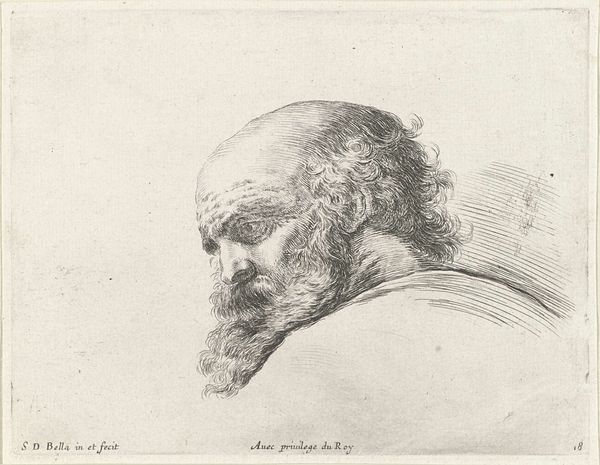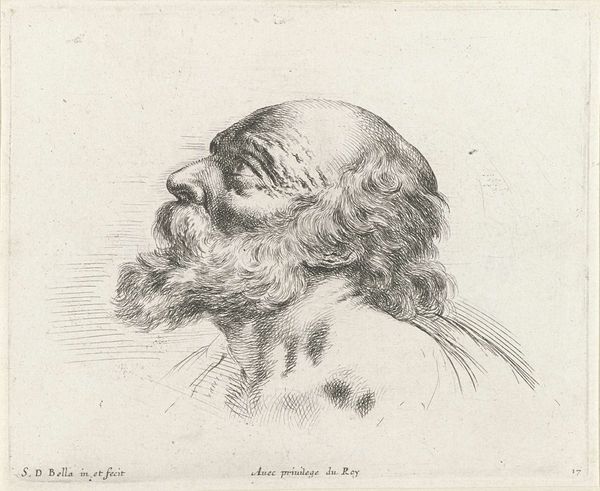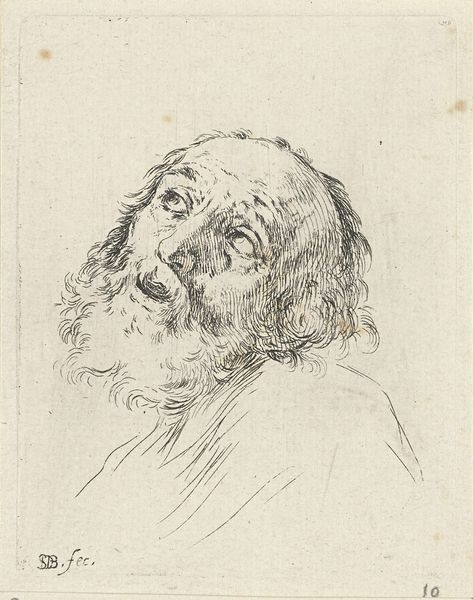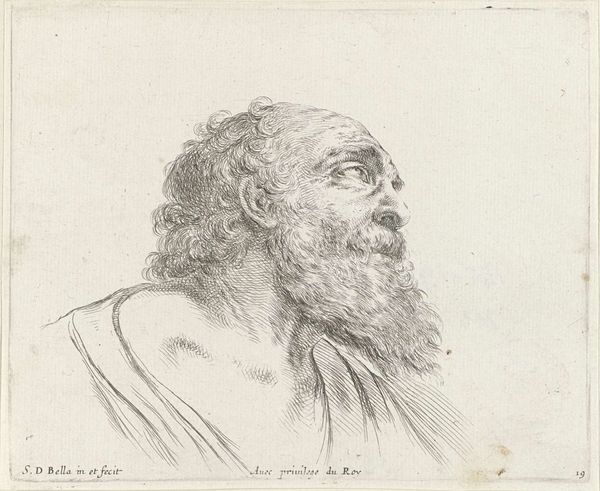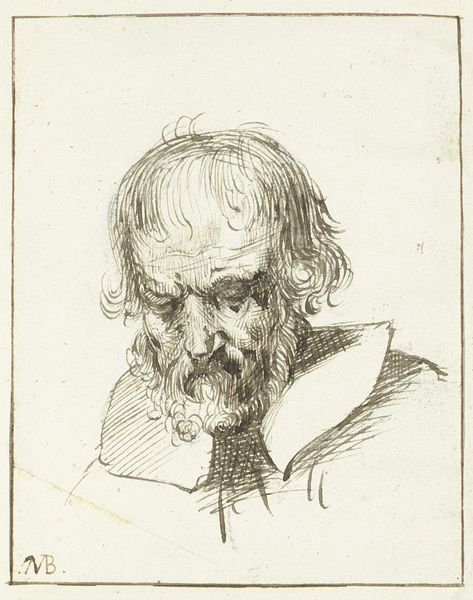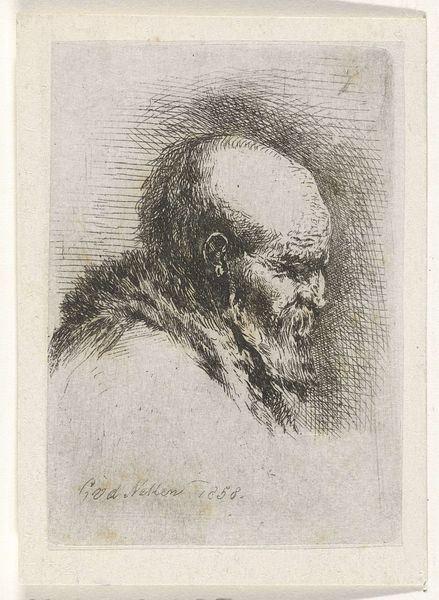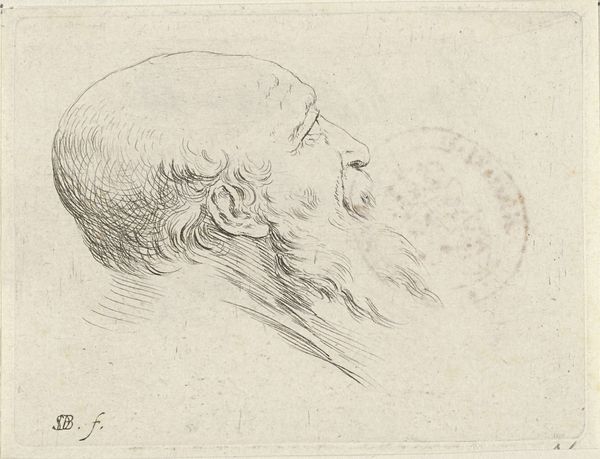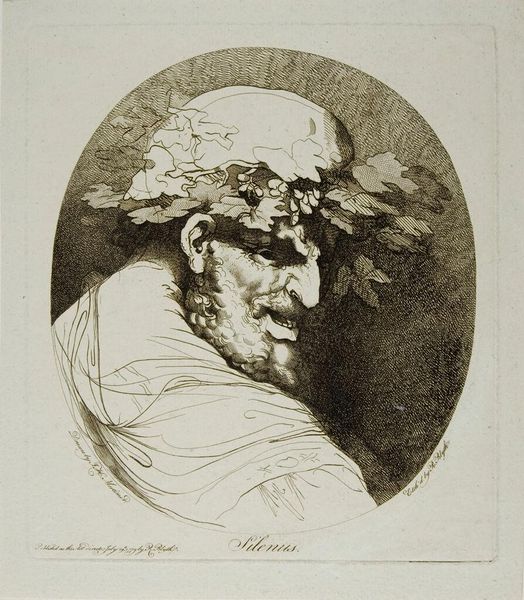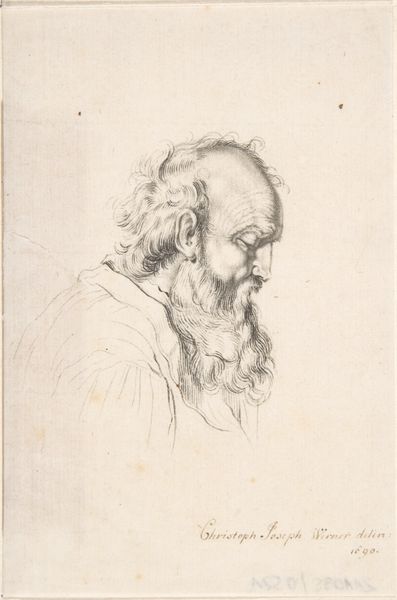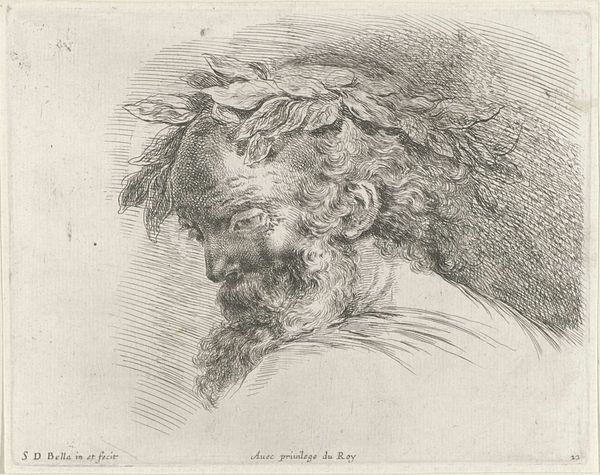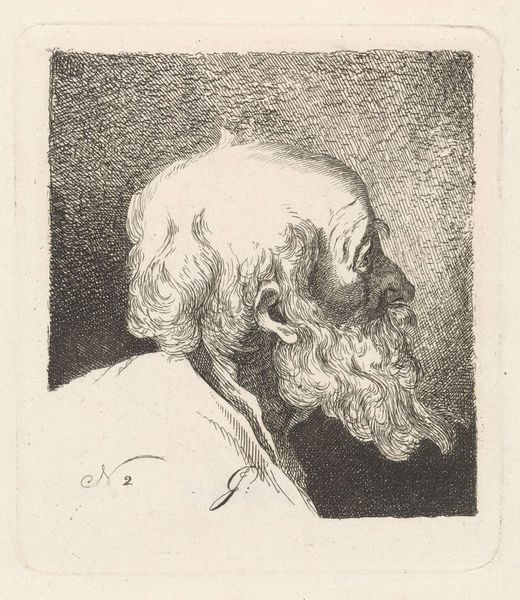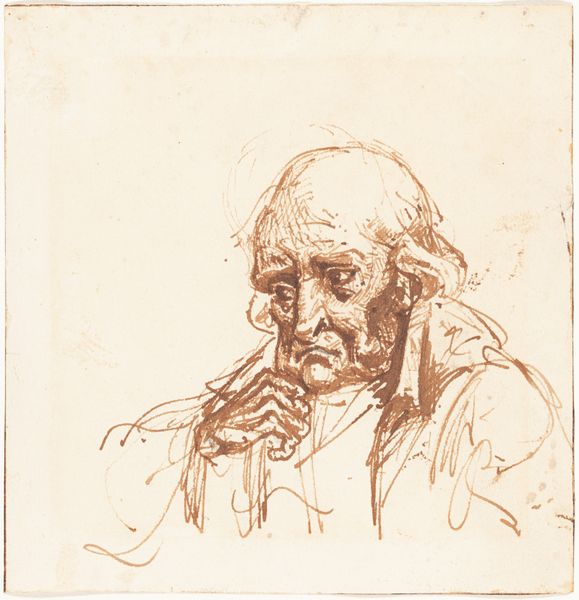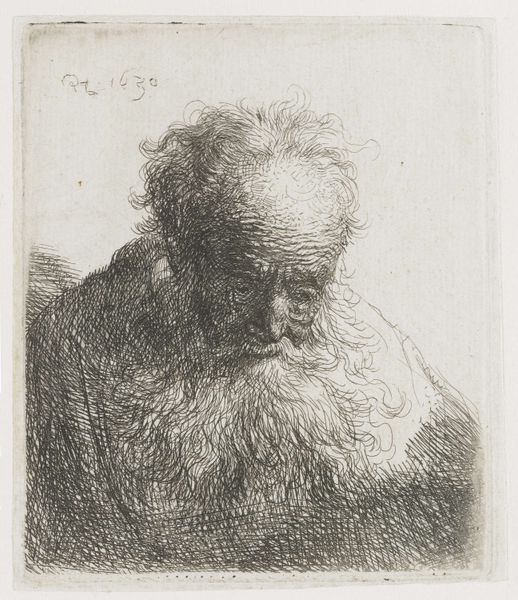
drawing, ink
#
portrait
#
pencil drawn
#
drawing
#
baroque
#
figuration
#
ink
#
pencil drawing
#
portrait drawing
#
academic-art
Dimensions: height 118 mm, width 150 mm
Copyright: Rijks Museum: Open Domain
Curator: Stefano della Bella's "Head of St. Peter, Looking Up to the Left," created sometime between 1620 and 1664, strikes me immediately. Editor: There's an intense, almost ethereal quality to it. The upward gaze, the play of light and shadow, and the starkness of the line work... It evokes a sense of longing or divine inspiration. Curator: Della Bella was a master printmaker working in the Baroque period, a time when religious art was a potent force in shaping societal views. Consider that the Baroque style was championed by the Catholic Church, embracing drama and emotion to connect with worshippers. Editor: Indeed. Notice how the swirling lines forming the beard and hair create a dynamic movement, contrasting with the relative stillness of his face? This contrast seems deliberately composed to direct our gaze. The artist employed ink to articulate volume through hatching and cross-hatching to show light and depth. Curator: The print carries "Avec privilège du Roy," which is intriguing because it tells us about artistic patronage during that era. Receiving royal approval suggests this image, and perhaps others in a series, were seen as reinforcing the monarchy's ties to the Church and therefore to divine authority. Disseminating these images served to legitimize political power, particularly at a time when religious conflict still brewed in Europe. Editor: Fascinating. From a purely aesthetic viewpoint, that upward tilt accentuates the planes of the face, heightening the sense of aged wisdom. We look at those furrows and know experience resides there. Curator: Precisely. The representation of St. Peter wasn't merely devotional, it also tapped into ideas of apostolic succession and papal authority. Visual depictions played an essential role in shaping beliefs and power structures of that historical moment. The portrait as a medium also played an increasing role within the broader movement of academic art. Editor: I can appreciate how the formal elements—the upward direction, the implied light source from above, even the texture achieved by ink— all unite to deliver a message of spiritual elevation. Curator: Looking at this now, it reinforces the impact imagery had during times of great change. Art was hardly ever just art. It served as a conduit for ideas, a stage for power, and a mirror reflecting society. Editor: Yes, analyzing those layers makes me reconsider how the stark formal choices ultimately affect and move us, bridging artistic intention with historical perception.
Comments
No comments
Be the first to comment and join the conversation on the ultimate creative platform.
